How to See the Liberty Bell...in Queens
A copy of the famous American bell can be found inside a bank, which itself is modeled after Independence Hall!


Throughout the early half of the 20th century, Astoria was home to nearly a dozen movie theaters, some operating mere blocks away from each other on the same main thoroughfare. While many of these forgotten theaters of Queens have been demolished, there are still some that exist today as gyms, post offices, auto repair shops, and more. Here, we uncover 7 sites that had former lives as vaudeville and movie theaters in Astoria!
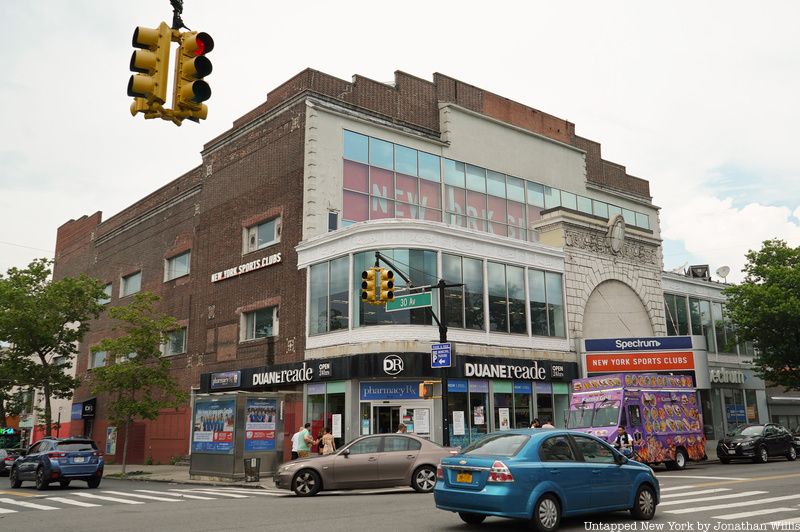
When the Astoria Theatre opened in 1920 it was reportedly the largest vaudeville house in Queens. Designed by renowned theater architect Thomas W. Lamb, it held nearly 3,000 people. Originally owned by producers Ward & Glynne, the building was purchased by Loew’s in 1923. In an open letter to “the theatregoing public,” Marcus Loew stated that he “hopes to offer the best in feature pictures and the best grade of vaudeville attractions” and was “quite happy to have been fortunate enough to add the beautiful Astoria Theatre to my chain.” Competition arrived in the 1930s when Loew’s Triboro Theater (demolished) opened just down the street.
In 1940, Loew’s sold the Astoria to the Skouras theater chain, and eventually, it came under the ownership of United Artists. Its interior was divided up into four screens at first, and by 1981 it was sixplex. Unable to compete with the rise of home video, cable, and other multiplex competitors, the theater shuttered in 2001 after more than 80 years in business. Today, though it’s occupied by retail like Duane Reade and New York Sports Club, remnants of its former life are still visible on the facade.
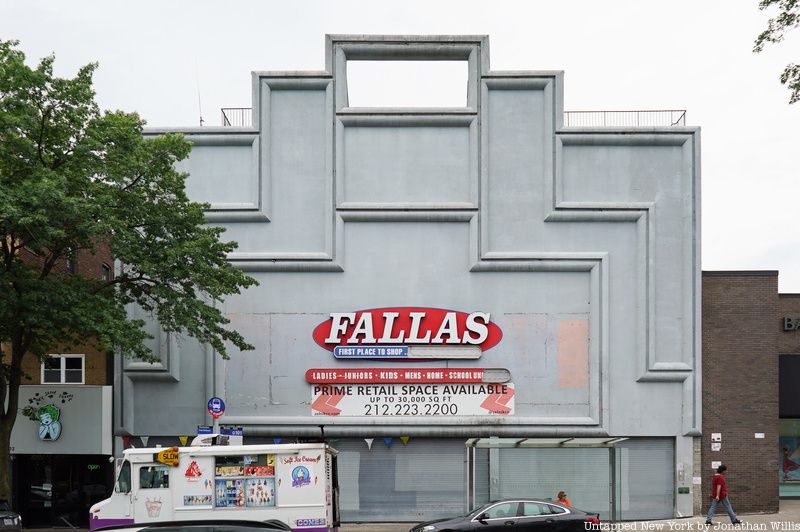
Opened in 1914, the Steinway Theatre was the first to appear on the street that shares its name. While the street was named after the famous piano company, the theater has no relation. Before screening films, the theater showed live vaudeville acts. An advertisement for the opening day told visitors to expect performances of “unexcelled quality.” The theater was renovated in the 1930s after its larger competitors, the Astoria and Triboro theatres, opened. The Steinway was relegated to playing late-run double features. In the 1950s, the theater ceased operation and the building was converted to retail space. Lerner’s Department Store occupied the space for 30 years and many people in the neighborhood knew the building as that, as there were no traces of the theater. Any details on the inside were covered up and the ornate terra cotta and marble embellished facade of the theater was replaced with a plain modern facade.
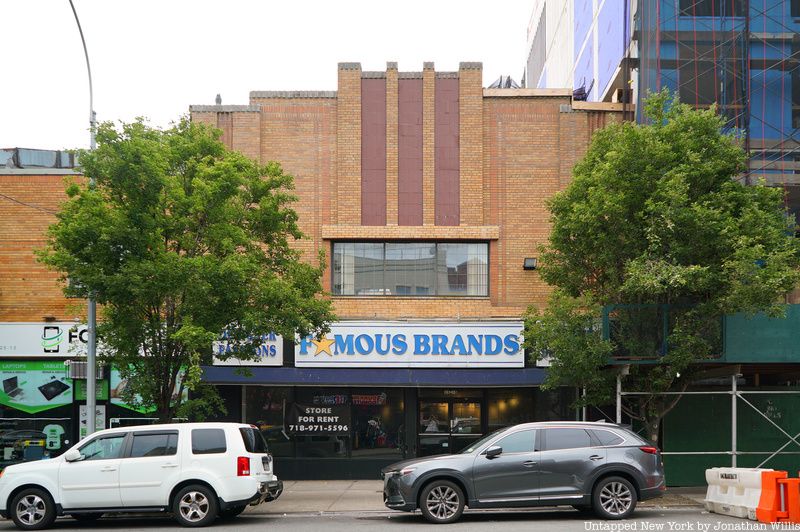
The Strand Theatre opened in August 1941, just months before the U.S. entered World War II. It was a later addition to Astoria’s theater scene as the neighborhood already had 10 other theaters operating in close proximity. The theater featured stadium seating for over 1,200 guests. It was in operation for just under 50 years, shutting down in the 1980s. Since then, the building has been converted into retail space but still retains a lovely stepped Art Deco roofline and brick facade.
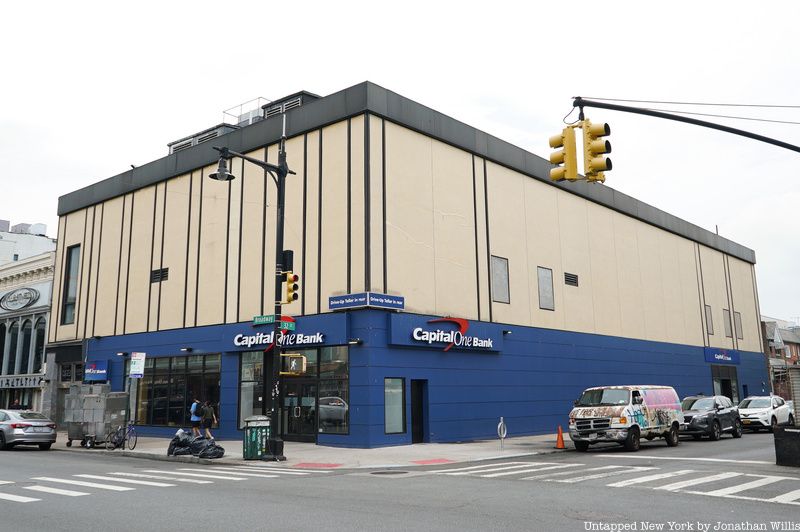
Steps from the elevated train, Broadway Theatre opened in 1924. The large, stadium-style theater was part of the Small & Strausberg Circuit which had locations throughout Queens and Brooklyn. It was one of over 40 theaters designed by the prolific architect Charles Sandblom, a protege of Thomas Lamb. Like the Astoria Theater, the Broadway Theater was eventually taken over by the Skouras chain. After the theater closed in 1962, it lost the marquee and vertical “Broadway” signage. Its brick facade was covered on two sides by a rather drab beige shell. It’s now a bank.
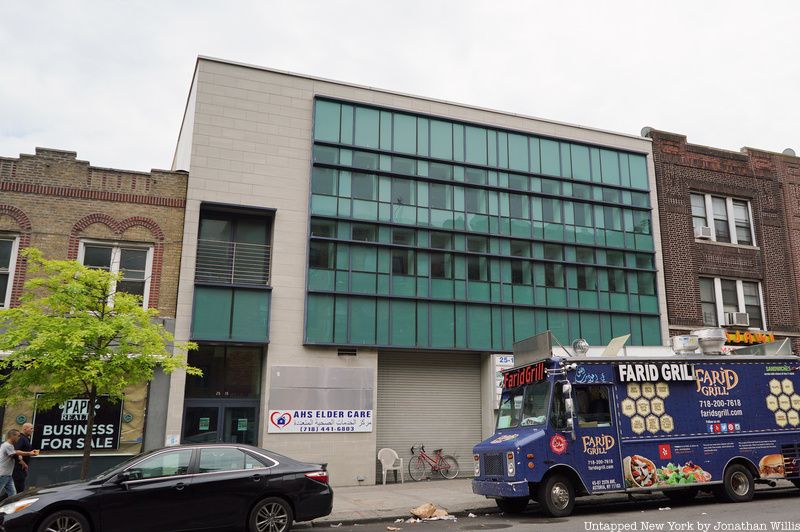
The Cameo Theatre was small compared to its neighborhood competitors, with room for just over 500 people. Despite its relatively diminutive size, the theater made big headlines. After being rebranded as the Olympia Theater, and for a time showing Greek language films, the theater began to show pornographic flicks. This choice didn’t sit well with community members. In 1981, theater operator Michael Pollock was sentenced to 90 days in jail on obscenity charges. The Olympia would soon be gutted and converted into retail space. Today it is a medical office with no hints of its former life.
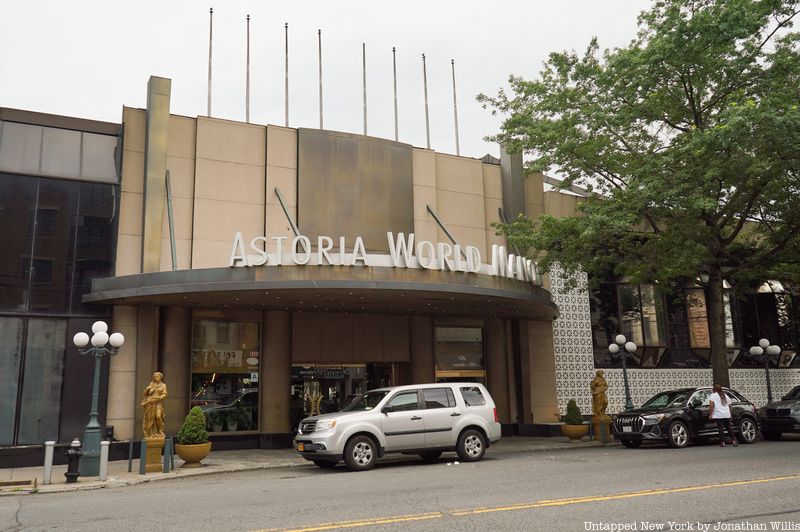
The Crescent Theatre was another Small & Strausberg location built near the elevated BMT line in the 1920s. Unable to compete with the Grand (demolished) and Broadway Theatres that flanked it, the Crescent closed in the 1950s. Since then, the building has been incorporated into a catering hall, Astoria World Manor, which has had several different owners since the 1960s. You can see a fabulous photo of the hall from the 1960s on Cinema Treasures, here.
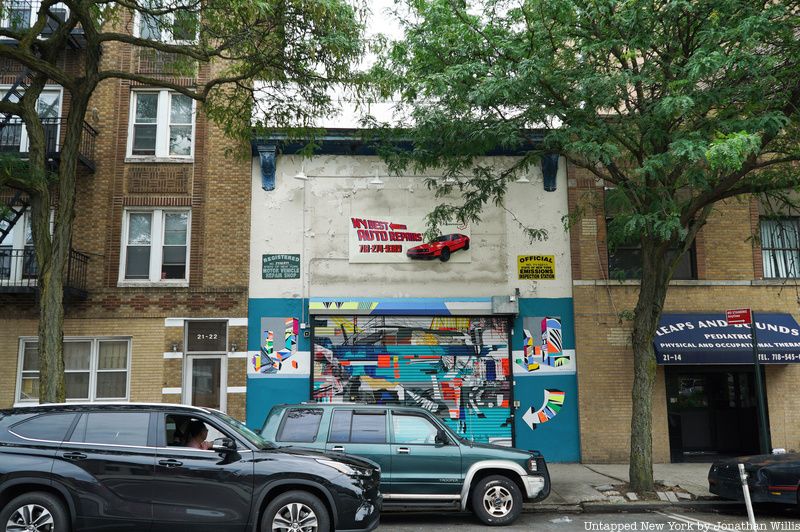
This tiny auto shop on Newtown Avenue (one of Astoria’s oldest roads) used to be a tiny theater! Opened in 1910 as the Meriden, it was later renovated and called the New Meriden, according to Cinema Treasures. This forgotten theater of Queens was in operation until the 1950s, showing late-run films to a small crowd.
Next, check out Forgotten Theaters of Brooklyn and The Bronx
Subscribe to our newsletter